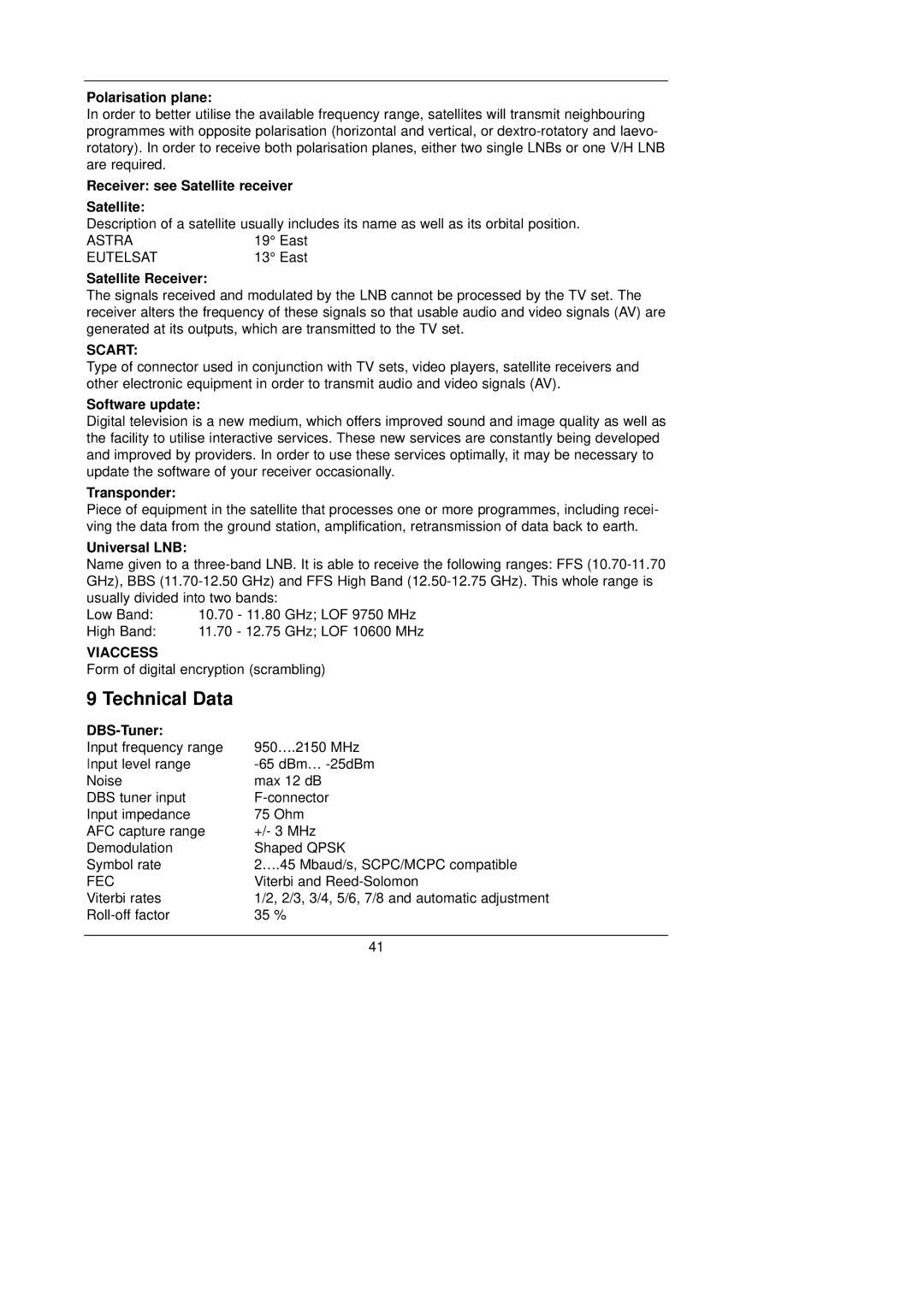
Polarisation plane:
In order to better utilise the available frequency range, satellites will transmit neighbouring programmes with opposite polarisation (horizontal and vertical, or
Receiver: see Satellite receiver
Satellite:
Description of a satellite usually includes its name as well as its orbital position.
ASTRA | 19° East |
EUTELSAT | 13° East |
Satellite Receiver:
The signals received and modulated by the LNB cannot be processed by the TV set. The receiver alters the frequency of these signals so that usable audio and video signals (AV) are generated at its outputs, which are transmitted to the TV set.
SCART:
Type of connector used in conjunction with TV sets, video players, satellite receivers and other electronic equipment in order to transmit audio and video signals (AV).
Software update:
Digital television is a new medium, which offers improved sound and image quality as well as the facility to utilise interactive services. These new services are constantly being developed and improved by providers. In order to use these services optimally, it may be necessary to update the software of your receiver occasionally.
Transponder:
Piece of equipment in the satellite that processes one or more programmes, including recei- ving the data from the ground station, amplification, retransmission of data back to earth.
Universal LNB:
Name given to a
Low Band: | 10.70 - 11.80 | GHz; LOF 9750 MHz |
High Band: | 11.70 - 12.75 | GHz; LOF 10600 MHz |
VIACCESS
Form of digital encryption (scrambling)
9 Technical Data
|
|
Input frequency range | 950….2150 MHz |
Input level range | |
Noise | max 12 dB |
DBS tuner input | |
Input impedance | 75 Ohm |
AFC capture range | +/- 3 MHz |
Demodulation | Shaped QPSK |
Symbol rate | 2….45 Mbaud/s, SCPC/MCPC compatible |
FEC | Viterbi and |
Viterbi rates | 1/2, 2/3, 3/4, 5/6, 7/8 and automatic adjustment |
35 % |
41
